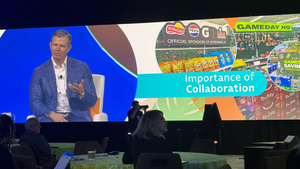Food Forum: The renaissance of mixed drinksFood Forum: The renaissance of mixed drinks
January 1, 2018
As consumers look for pure ingredients when making cocktails, retailers can benefit from merchandising bottled water near the spirits and other mixed drink COMPONENTS. By P. Allen Smith A quick check of the blogosphere finds that most experts recommend using purified water when mixing the perfect cocktail. By merchandising bottled water near the spirits and other components of mixed drinks, retailers can increase sales, support local water bottlers and encourage shoppers to use the appropriate ingredients for their mixed drinks. According to New York-based Beverage Marketing Corp., the overall U.S. liquid refreshment beverage market grew by just 0.9% in 2011. However, bottled water sales swelled by 4.1% during the same period. By all accounts, consumers’ love affair with bottled water is not waning. In fact, Americans upped their annual consumption of bottled water by more than 11 gallons, from 16.7 gallons per person in 2000 to 28.3 gallons in 2010. In Little Rock, Ark., we are blessed with a local source of amazing still and sparkling spring waters that are bottled by Mountain Valley Spring Water. When I entertain groups or just have an intimate gathering of friends at my Moss Mountain Farm that is what I use in my cocktails. The unique attributes of Mountain Valley Spring Water result from the natural spring source the company uses and has carefully protected since 1871. The Mountain Valley bottling facility is located right atop the spring site, surrounded by 2,000 acres of pristine, company-owned forestland. Enter the concept of terroir. Terroir comes from the French word terre, meaning “land,” which is used to represent the special characteristics that the geography, geology and climate of a certain place give to a product. The concept of terroir exists in other drink ingredients, notably in Cognac, where the chalky soil, climate and distance from the Atlantic are all factors influencing the grapes. Minerality is the keystone of terroir. But what does terroir have to do with a cocktails renaissance? Well, the use of minerals in cocktails constitutes a kind of “cocktail terroir.” The most literal interpretation of this concept is adding minerals directly to the cocktail. A bar in New York City was actually adding rocks to its martinis, using a white stone from the Liguria region in northwest Italy and a black stone from Mongolia. The stones were soaked in vermouth for 12 hours and then deposited into the drinks to create a very dry and very unconventional martini. I would suggest to grocers that locally sourced spring water makes a great contribution to the cocktail hour since it is refreshing and pure. And by using spring water in certain cocktails cuts back on calories, appealing to health-conscious consumers who want to enjoy an occasional cocktail. Spring water can also be added to white wine for a light adult beverage to sip poolside on a hot day. Many consumers do not like the taste of tap water in mixed drinks and go out of their way to avoid chlorine and fluoride. They turn to chemical-free alternatives such as bottled spring water. Retailers should try stocking an end-cap with all of the drink ingredients for a featured drink to create a convenient point-of-purchase display. This idea could translate into a sales renaissance for bottled spring water as a mixer. P. Allen Smith is an award-winning designer, gardening and lifestyle expert and host of two public television programs, P. Allen Smith’s Garden Home, P. Allen Smith’s Garden to Table and the syndicated 30-minute show P. Allen Smith Gardens. For more information, visit www.pallensmith.com.
About the Author
You May Also Like




